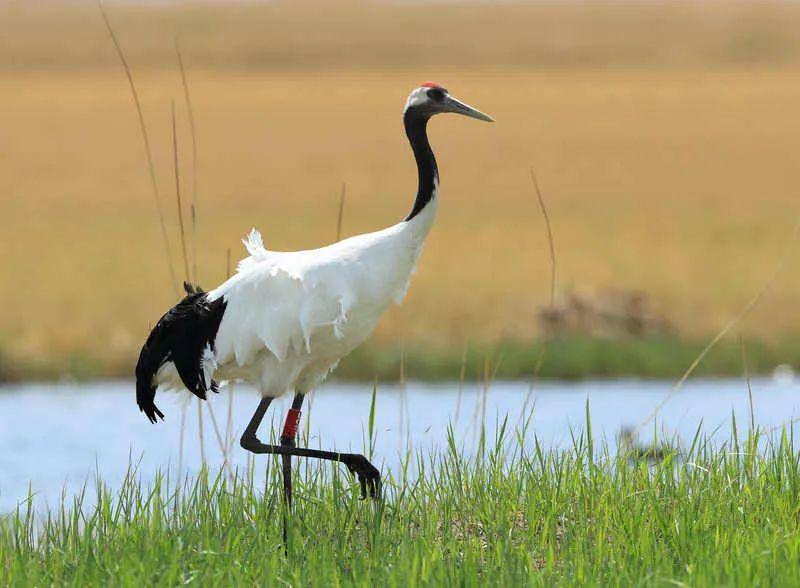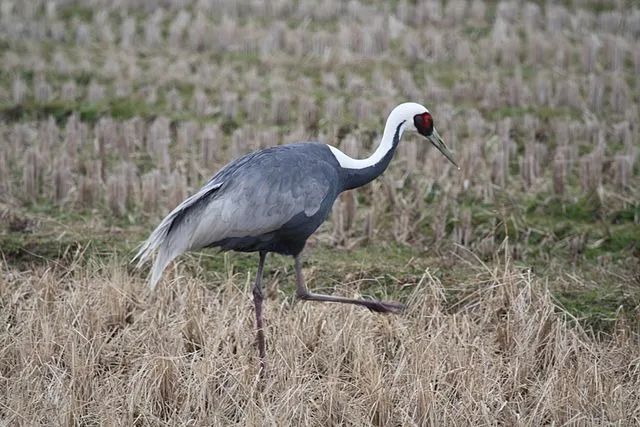According to experts, during the long-term natural evolution, cranes have not only figured out optimal migration routes, but also divided their respective living territories, forming a colorful and orderly "crane world".

There are 15 species of cranes existing in the world, divided into Crane subfamily and Crane subfamily. Among them, the Crowned Crane subfamily includes two species, the black-crowned crane and the gray-crowned crane, which live in Africa; the Crane subfamily includes the remaining 13 species of cranes, including the Demoiselle Crane, White-headed Crane, White-naped Crane, Gray Crane, Sandhill Crane, Red-necked Crane, White crane, red-crowned crane, black-necked crane, wattled crane, Australian crane, whooping crane and blue crane.
There are nine species of cranes that mainly inhabit China, namely: Demoiselle Crane, Bald Crane, White-naped Crane, Gray Crane, Sandhill Crane, Red-necked Crane, White Crane, Red-crowned Crane and Black-necked Crane. Among them, there are 6 species of national first-level protected wild animals and 3 species of national second-level protected wild animals. In the long-term natural selection, they have divided their respective activity areas and enfeoffed territories, ranging from plateaus to plains. Lakes and swamps with excellent water quality are the common first choice for cranes living at all altitude levels.

"Black-necked crane occupies the entire plateau, the Qinghai-Tibet Plateau and the Yunnan-Guizhou Plateau." The black-necked crane is a national first-level protected wild animal. It is the only species in the world that grows and breeds in The cranes on the plateau are also the latest crane species discovered in the world.

"White Crane went to the tundra zone to breed." White Crane is a national first-level protected wild animal, mainly distributed from the northeast to the middle and lower reaches of the Yangtze River, coastal areas and Xinjiang. Siberian cranes are the cranes with the most specialized habitat requirements. They are very attached to shallow wetlands and prefer lowland tundra.

"The red-crowned crane has occupied the reed swamp." The red-crowned crane is a national first-level protected wild animal. In ancient my country, it symbolized happiness, auspiciousness, loyalty and longevity. It has the appearance of an immortal and is also known as Call it "Crane". Every year after autumn, red-crowned cranes migrate from their breeding grounds in the northeast to the south to overwinter. Our country has established a number of nature reserves such as Zhalong, Xianghai, and Yancheng in the breeding and overwintering areas of red-crowned cranes and other cranes. Among them, the largest number of tidal flats are located along the coast of Yancheng, Jiangsu.

"White-naped Crane and red-crowned crane are sometimes distributed in the same area. The best position is occupied by red-crowned crane, while white-naped crane is at the edge." White-naped crane is a national first-level protected wild animal, and its individual size is between Between the white-headed crane and the red-crowned crane, the living habitat is also between the reed swamp of the red-crowned crane and the forest wetland of the white-headed crane, or on the edge of them.

“The Bald Crane was so crowded that it went to the forest wetland, but it still lived a comfortable life.” The Bald Crane is a national first-level protected wild animal. It lives in the inaccessible forest wetland and avoids contact with the forest wetland. Competition from other cranes. It mainly breeds in the Amur River Basin in Russia and the hinterland of the Lesser Khingan Mountains in China, but sometimes it nests in the same area as the gray crane and migrates together.

"Demoiselle Crane does not have the advantage of occupying territory. The habitat environment is relatively harsh, so it can only choose the remaining relatively dry territory." Demoiselle Crane is a national second-level protected wild animal. Its behavior is elegant, steady and dignified. , so it is also called the lady crane. Every year they migrate south from the border area between China and Mongolia, flying over the Himalayas to spend the winter in the Thar Desert of India. In China, it breeds in Xinjiang, Ningxia, Inner Mongolia, Heilongjiang, Jilin and other provinces, and overwinters in southern Tibet; during migration, it is found in Hebei, Qinghai, Henan, Shanxi and other provinces.

"Gray cranes have a more Zen-like way of survival: they don't pick their territory or their neighbors. They are the largest number of cranes in China." Gray cranes are national second-level protected wild animals and are among the cranes. The more numerous and common one. It is widely distributed in Eurasia, with a global population of more than 500,000. It inhabits open plains, grasslands, swamps, riverbanks, wilderness, lakes and farmland areas, and "goes wherever it suits you."

Sandhill cranes live in family groups with other cranes in various types of wintering grounds. Sandhill crane is a national second-level protected wild animal. It is mainly distributed in North America, Cuba and northeastern Siberia. It is occasionally seen in China. Habitually inhabits grassy tundra zones and grasslands near rivers, swamps and lakes.

The Red-necked Crane is "fading out" from China. Just as the global number of red-necked cranes is declining, there have been no records of red-necked cranes found in China in recent years. The red-necked crane is a national first-level protected wild animal and is only distributed in Yunnan in my country. It inhabits grassy fields, swamps and forest edges.
animal tags:
We created this article in conjunction with AI technology, then made sure it was fact-checked and edited by a Animals Top editor.